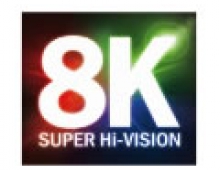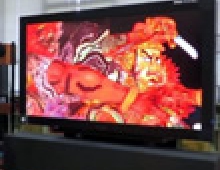
Ultra High Definition Television Nearing Reality
The International Telecommunications Union's ITU-R Working party 6C has agreed technical characteristics for the the 4K and 8K UHDTV (Ultra High Definition TV) formats.
UHDTV marks a leap forward beyond the current standards for High Definition Television (HDTV).
The new formats have the option of 'constant luminance' encoding, and allow up to 120 pictures/second.
Broadcasters have been experimenting with the transmitting/receiving hardware requirements of UDTV signals, either using satellite (22GHZ) or terrestrial methods.
Japan's NHK public broadcaster of 7,680 x 4,320 video last week succesfully tested a terrestial transmission in Japan and plans to bring the technology in the following years. NHK, Panasonic, and JVC-Kenwood have also showcased large UHDTV 4K and 8K displays, along with a digital projector that can display 7,680 x 4,320 video at 120 frames per second.
In Europe, bradcasting tests of the UHDTV format will take place at the London Olympics.
The new formats have the option of 'constant luminance' encoding, and allow up to 120 pictures/second.
Broadcasters have been experimenting with the transmitting/receiving hardware requirements of UDTV signals, either using satellite (22GHZ) or terrestrial methods.
Japan's NHK public broadcaster of 7,680 x 4,320 video last week succesfully tested a terrestial transmission in Japan and plans to bring the technology in the following years. NHK, Panasonic, and JVC-Kenwood have also showcased large UHDTV 4K and 8K displays, along with a digital projector that can display 7,680 x 4,320 video at 120 frames per second.
In Europe, bradcasting tests of the UHDTV format will take place at the London Olympics.





















